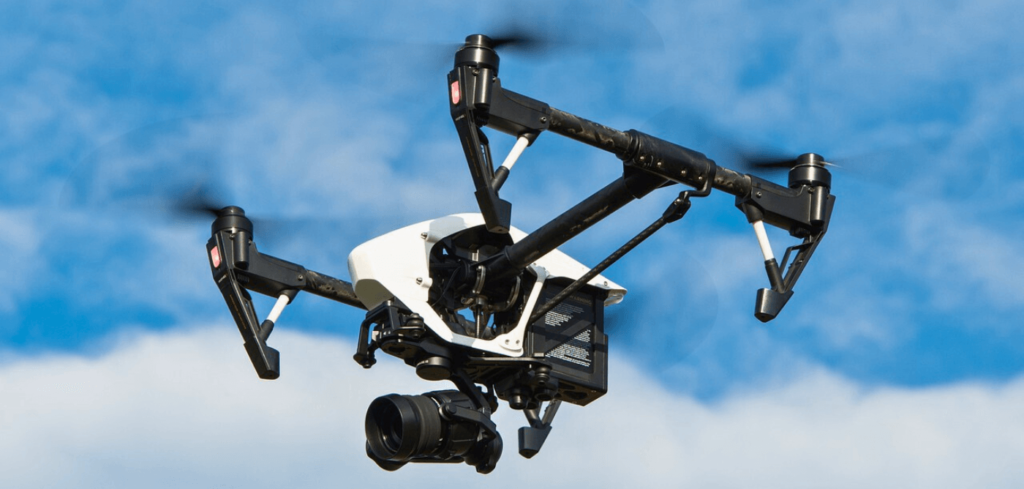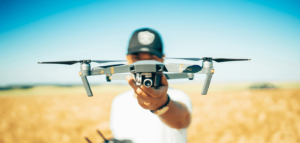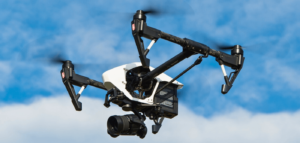
Drones have exploded in popularity in recent years. Also known as unmanned aerial vehicles (UAVs), drones are being used for everything from photography to inspecting infrastructure. The drone market is expected to continue growing rapidly, with revenue projected to reach $63.6 billion by 2025 according to PwC.
As drones become more mainstream, many individuals are interested in learning how to fly them. However, piloting a drone can seem daunting for beginners. This article will provide a step-by-step guide on how to fly a drone for the first time. By following these instructions, even a complete novice can learn the basics of drone flight.
Before jumping into flying, it’s important to understand some key information. There are rules and regulations for operating drones, as well as important safety tips to follow. We’ll provide an overview of these key things to know before you takeoff. Then, we’ll walk through the steps of flying a drone from your first flight through more advanced maneuvers. By the end, you’ll have the fundamental skills to safely operate a drone as a hobbyist.
Section 1: Things to Know Before Flying a Drone
Rules and Regulations
The Federal Aviation Administration (FAA) regulates the use of drones in the United States. It’s important to understand the rules before starting to fly. Here are some of the key regulations:
- Register any drone over 0.55 lbs with the FAA
- Drone pilots are required to pass an aeronautical knowledge test to earn a remote pilot certificate
- Drones must stay below 400 feet altitude
- Operations must be during daylight hours
- Drones cannot fly over people or moving vehicles
- Waivers or authorizations are required for night flying or flying in controlled airspace
Make sure you understand and comply with any state or local regulations as well. Some municipalities may have additional restrictions.
Safety Tips
Follow these tips to ensure safe flight operations:
- Keep your drone within your line of sight at all times
- Complete a pre-flight inspection to confirm all systems are working
- Start off flying in open areas away from trees, buildings and power lines
- Carefully follow manufacturer’s instructions for your specific model
- Avoid flying in bad weather conditions with rain, wind or low visibility
- Maintain a safe distance from airports
- Consider starting off with a small, inexpensive drone to learn on
Drone Components
Before flying, it’s helpful to understand the basic parts that make up a drone:
- Frame – provides the structure
- Motors – spinning propellers to create lift and movement
- Propellers – create thrust to lift the drone
- Flight controller – the brain that controls stability and responds to user input
- ESC – controls speed of the motors
- Battery – provides power, often lithium polymer
- Remote control – allows user to control drone manually
- Gimbal – steady mount for camera to take smooth video
Many drones also have extra features like GPS for stability and return to home ability or obstacle avoidance sensors. We’ll focus on the core components required for basic flight.
Section 2: How to Fly a Drone
Now that we’ve covered some essential drone information, let’s get into actually flying one. We’ll start with basic steps and maneuvers, then cover more advanced flight modes.
Charge Battery
Lithium polymer batteries are commonly used to power drones. Be sure to fully charge the battery that came with your drone prior to your first flight. It’s a good idea to charge batteries the night before you want to fly. Follow the charging instructions carefully.
Calibrate Compass
The compass helps stabilize the drone’s orientation. Calibrating it before flying can improve performance. Initiate the calibration through the app or remote control per manufacturer instructions. This typically involves rotating the drone horizontally through 360 degrees and vertically through 180 degrees.
Initialize Drone and Remote
Turn on the drone and remote controller. Connect them through the app or press linking buttons. Follow on-screen instructions to initialize drone systems and establish connectivity. The status lights will confirm when the drone and remote are linked up.
Takeoff and Hover
Once initialized, it’s time for liftoff! Select takeoff in the app and the drone will automatically rise to an altitude of a few feet and hover in place awaiting input. Gradually push up on the left stick of the remote to ascend higher, stopping at 10-15 feet for your first flights.
Flying Movements
Here’s what the two control sticks do on a typical remote:
Left stick:
- Up/down – Ascend/descend
- Left/right – Rotate left/right
Right stick:
- Up/down – Fly forward/backward
- Left/right – Fly left/right
Start off slowly pushing the sticks trying each movement. Fly in an open area and maintain your line of sight with the drone.
Controlling Altitude
To go up or down, smoothly push the left stick up or down. Descend slowly back to eye level. Don’t make sudden altitude changes. Go high enough to avoid obstacles but stay low enough to maintain good visibility.
Controlling Speed
Pushing the control sticks farther from center will speed up drone movements. Start off gently pushing the sticks to keep speed slow as you practice. You can gradually increase speed as you get comfortable.
Landing
The easiest way to land is using the auto landing feature in the app. The drone will descend, touch down, and power off. You can also slowly reduce throttle until the drone touches down. Land gently on a flat, clear area.
Congratulations, you’ve completed your first drone flight! As you practice more, you’ll develop coordination and muscle memory for the stick movements. It’s a good idea to fly in multiple short sessions as you’re learning. Take it slowly and focus on smooth movements.
Section 3: Advanced Maneuvers
Once you’ve mastered the basics, you can start expanding your flight skills with more advanced techniques. Here are some common drone maneuvers to learn:
Flips
Drones like the DJI Mavic can perform flips at the press of a button. This can capture dramatic video but should only be attempted once you’re very comfortable flying in normal modes.
Rolls
Executing a roll takes more practice. Push the pitch stick in one direction to start the roll, let off briefly at 90 degrees, then complete the 360 degree rotation. Be conservative with the control inputs to maintain stability.
Point of Interest
Set a point of interest like a statue or landmark. The drone will autonomously circle the object while keeping the camera fixed on it. This allows you to capture dynamic orbiting shots.
Waypoint Navigation
Program a flight plan by selecting multiple waypoints in the app. The drone will automatically fly the route going from point to point, freeing you up for framing shots.
Follow Me
With GPS tracking, your drone can autonomously follow and film you. This lets you capture action shots hands-free. Be sure to maintain safe separation distances when using follow modes.
Return to Home
At the press of a button, the drone will automatically fly back to the takeoff point and land. This failsafe brings your drone home if connection is lost or battery gets low.
Work on one maneuver at a time to avoid getting overwhelmed. Nail the basics before moving onto more advanced techniques. Take it slow and fly conservatively.
Section 4: First Person View (FPV) Flying
FPV, or first person view, gives you a drone’s eye perspective through a live camera feed. It’s an immersive flying experience. Here’s an overview of how to get started:
FPV Equipment
To fly FPV, you’ll need:
- FPV drone with compatible camera and transmission system
- FPV goggles to see the drone’s camera feed
- Strong radio controller with long range
- Any required cables for connecting components
Ideally learn to fly line of sight first before attempting FPV.
FPV Flying Tips
Follow these tips for safe FPV flight:
- Fly with a spotter who can keep the drone within line of sight
- Fly lower and slower in FPV since distance perception changes
- Scan horizons and landmarks to maintain spatial awareness
- Use return to home function if you get disoriented
- Mind obstacles and hazards which may be hidden from the camera view
Start off practicing FPV at altitudes of about 10 feet to avoid crashes. Scan ground level obstacles before flying higher. With practice, you can learn to seamlessly switch between line of sight and FPV flying.
Section 5: Drone Camera and Video
One of the most compelling reasons to fly a drone is capturing stunning aerial footage and photos. Here’s an overview of using cameras on a drone:
Camera Controls
Use the app or remote control to tilt and pan the camera gimbal. Buttons allow you to start/stop recording video or capture still images. Monitor the camera feed from your mobile device.
Shooting Tips
Apply these tips for improving aerial shots:
- Keep drone movements steady and stable when recording
- Change elevation and angles to add visual interest
- Focus on appealing subjects like landscapes, structures, people
- Shoot at dawn or dusk for most flattering lighting
- Avoid shooting into the sun which can cause lens flare
Editing
Import the footage to video editing software like Final Cut or Premiere. Trim clips and arrange shots into a sequence. Enhance color, contrast, and audio. Add text overlays and transitions to finish the video.
Sharing
Export the polished video and upload to YouTube, social media, or your website. Make sure to properly credit any music used. Enable drone video monetization through the YouTube partner program if eligible.
Conclusion
We’ve covered the complete process of learning to fly a drone safely as a beginner. Follow the steps outlined to takeoff, maneuver, and land. Tap into more advanced capabilities like automated flight modes and aerial photography.
Drones provide an exciting way to develop piloting skills and capture the world from above. With practice, you’ll be able to confidently fly and film unique perspectives.
Always maintain safety as your top priority. Abide by regulations, keep your distance from people, and fly conservatively at first. Proper training and experience will allow you to become a skilled drone operator.
The world of possibilities from drone flight is vast. This guide has given you the foundation. Now it’s time to get out and explore the skies! Keep learning and elevating your abilities as a drone pilot.



